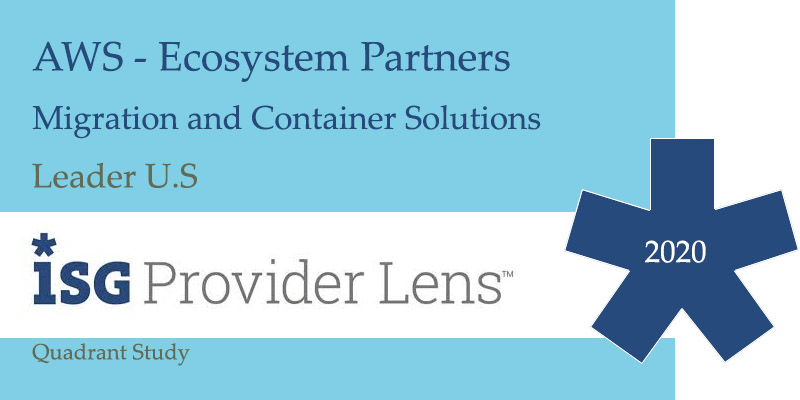As we enter a new decade, it is absolutely heartening to see the evolution of containers and especially container orchestrator Kubernetes, takes off as the de-facto change agent for transformation being embedded into enterprises as the “ubiquitous substrate in driving programmable infrastructures” . - as James Watters, CTO MAPBU, VMware Tanzu remarks.
Kubernetes, a container orchestrator with policy layers and control loops built into its core, is ready to power the digital foundations of businesses that are increasingly becoming platform-driven in a multi-cloud world. This strategy enables enterprises to embrace and democratize composability as a means to drive speed, agility, productivity and resiliency of their own application portfolio.
What has worked well thus far?
I’d like to take a step back to look at the transformation objectives and the platform adoption patterns that were made by various enterprises. In this context, the important principles for an enterprise to consider on its transformation journey are the relevance of the platform in regard to their existing application portfolio, the ease of adoption of the platform, and the platform’s ability to drive holistic digital outcomes. These considerations matter significantly to an enterprise’s propensity to digitally transform in addition to having the ‘table-stakes’ ecosystem support that PaaS provides.

Given the competitive pressures that enterprises and CXOs are facing, “the writing is on the wall” to drastically transform at scale and with a sense of urgency. Former software modernization company Pivotal, their OS Cloud Foundry project, OS Spring communities and global ecosystem of partners saw this opportunity upon Pivotal’s conception in 2013. This played a significant role in driving holistic transformation across the platform, application modernization, and greenfield application development with modern engineering practices that saw amazing KPI delivery in the world’s biggest Fortune 200 companies. Now a part of VMware, Pivotal’s vision lives on in the Tanzu offering as a critical function of the ‘Build’ foundation.
In this context, Pivotal delivered an opinionated platform and an awesome > cf push developer experience which brought incredible results to several large tier-1 enterprises. This readily won a share of sponsorships from pragmatist CIOs, CTOs, and CEOs with a growth mindset. Personally, I have seen several of our clients and large ‘behemoth’ enterprises moving at least 70% faster with developer to production automation, enabling over 50 production releases a day from traditionally quarterly release cycles, application developer to administrator ratios shrinking down to a ratio of 300:1, security teams building continuous compliance models, and teams patching constantly while keeping their applications secure. This was simply impossible without the forward-thinking leaders and early adopters from enterprises betting on the “enterprise value” of opinionated frameworks driving such dramatic digital outcomes.
As it turns out, in an enterprise polyglot workload estate, not all patterns require an opinionated approach and several enterprise application patterns need a unified & automated model to build, manage, and run modern applications. This is where Kubernetes, a CNCF community-backed container orchestrator, decisively won the orchestrator of choice debate in the ability to show value in managing complex containerized workloads. Shortly afterwards, the industry witnessed the emerging patterns of adopting upstream Kubernetes distributions to solve such patterns. VMware Enterprise Kubernetes (PKS) initially offered a managed distribution service that allowed the creation of clusters and managed containerized workloads along with several other aspects which should be addressed when containerizing applications. Some of these considerations include the deployment of highly available clusters, implementing rolling upgrades and roll backs, and enforcing user-policies. PKS will now be a key factor in the ‘Build’ portion of the Tanzu portfolio bringing enterprise’s containerized workloads to synchronous harmony amongst each other.
While many might have already experienced the evolution of an enterprise migrating towards digital transformation, I’d like to bring up some of the fundamental transitions that executives must now note, as they plan their future with VMware Tanzu and Kubernetes.
What to expect as VMWare Tanzu rolls out?
But this is not the only way that customers are playing a leading role in reshaping how companies operate. Increasingly, what they are drawn to is an organization’s ability to stand for something bigger than what it sells. A majority of today’s customers seek to patronize brands that are mindful of their impact on communities, the social and natural environment, and how they walk the talk in demonstrating their commitment to ethical values.
The integrated vision of VMware’s Tanzu family is fantastic for customers who can now focus on higher order transformation initiatives and drive enterprise agility across their developers, operators, and architect communities. This is accomplished by providing infrastructure-agnostic and programmable experiences through a commonly accessible control plane and operating model which in turn provide a seamless build, run, and manage experience across any workload on PAS (Pivotal Application Service) or PKS workloads with a hybrid/multi-cloud strategy, now known as Tanzu Application Service and Tanzu Container Service, respectively.
There are a number of features that I am excited to learn more about on Tanzu’s integrated product roadmap like the cluster API control plane, the management of multiple Kubernetes clusters through a ‘single-pane of glass’ dashboard, the capability of running multiple projects in a single Kubernetes cluster, and the Bitnami application catalog now known as the Tanzu Application Catalog. Even more so, I’m excited about the possibilities and the adoption choices that enterprises will get to incorporate into their own digital transformation strategy as they evolve and mature in the coming quarters.
Key Features Tanzu Provides:
• Flexibility to the developers who need cluster-level control to run workloads the way that they want.
• Enterprise operators the ability to run large Kubernetes clusters in unison which saves on organizational cost without sacrificing speed or flexibility.
• IT operation teams that may be nervous about unmanaged ‘orphan’ clusters a sense of stability. These people are typically looking to centralize their operations and ‘run policy as code’ on such types of clusters.
• The management of a cluster’s lifecycle with extensible third-party APIs in a stable and secure manner.
In conclusion, achieving your digital transformation goals during in the ‘Industrial 4.0’ era is going to require a holistic approach and strategic ecosystem play. While our customers are excited about the possibilities that Tanzu is going to offer for their own digital transformations and the effort that VMWare is making to simplify running their new platform, there are also many open questions that this ecosystem and respective community will need to address in order to be successful progressing forward. These considerations include avoiding adoption bottlenecks, delivering applications at scale, and delivering distinguished business impacts across verticals. If you’re considering Tanzu for your enterprise’s digital transformation, here are some factors to consider that are critical to your own adoption journey:
• It is critical that the technology that is adopted for your application portfolio has a strong commitment to Open Source.
• There should be consistent and coherent user experience across all of your teams, regardless of whether they manage the application portfolio or develop it.
• Your portfolio should be manageable and portable from any infrastructure to another, for example: from the edge to any public cloud.
• Much like applying jazz improvisation patterns in music, an application portfolio should have choreography which is flexible but driven and aligned to vertical solutions for an entire portfolio transformation.
As companies try to find better ways to stay relevant, they must reconsider their current business models. Unless they prioritize thinking out-of-the-box with the customer in clear sight, they stand to lose ground, customer patronage, and market relevance. In the next post, which will conclude this special blog series focused on Architecting Disruption, we will discuss why businesses must cast their talent net far and wide to pick and deploy innovative thinking. Stay tuned!



